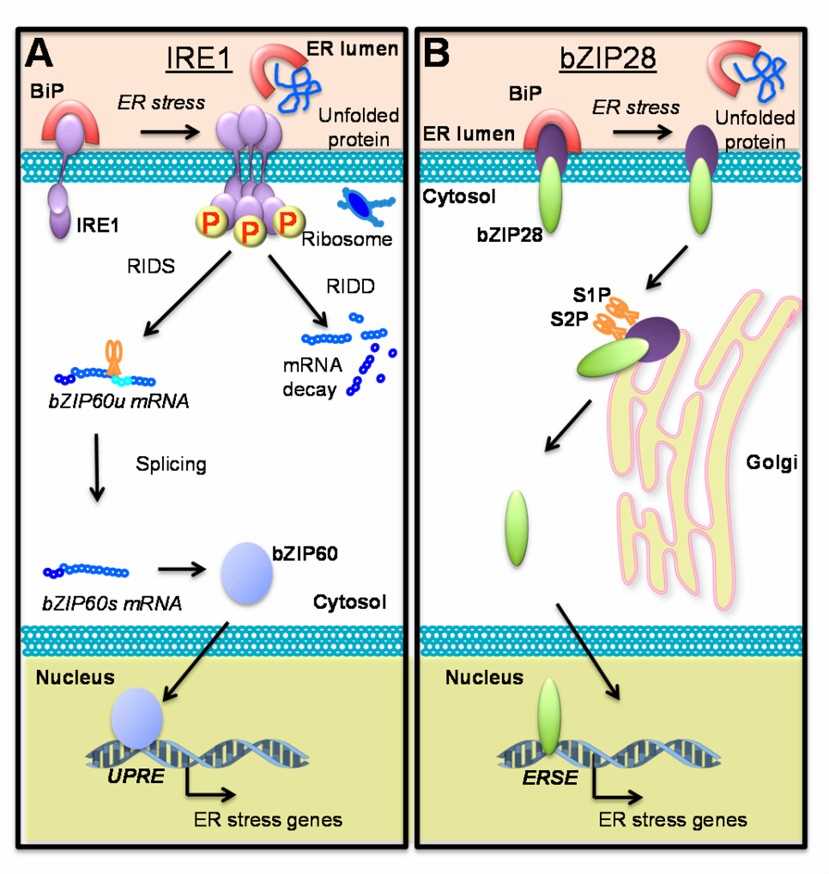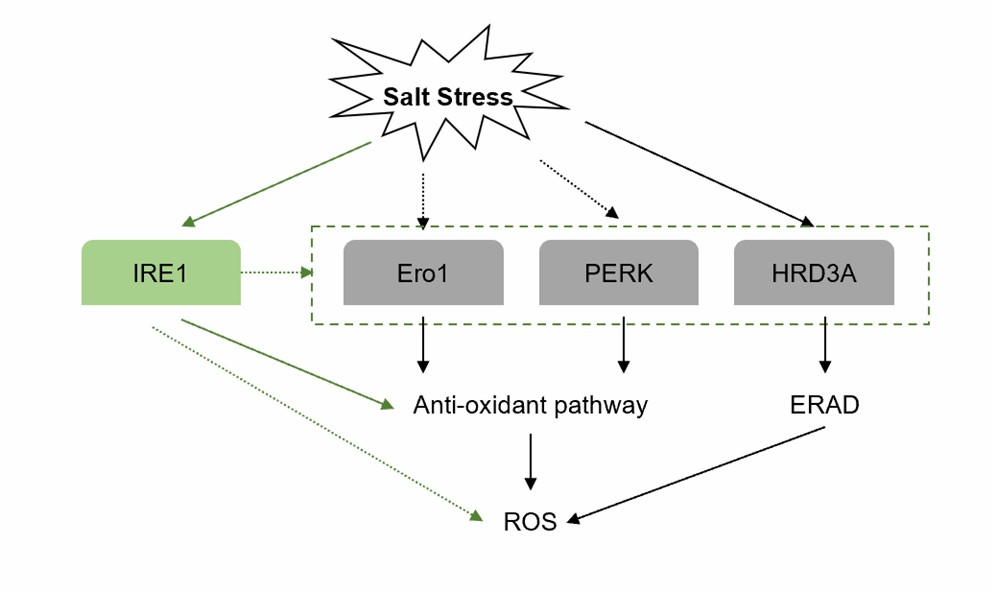Endoplasmic reticulum (ER) is an important organelle for synthesizing cellular proteins, essential lipids, and complex proteins in organisms. Protein folding in the ER is a random process with a tendency to error, and about 1/3 of newly synthesized proteins are misfolded. Misfolded proteins fold further or enter ER related degradation processes so that the organism reaches homeostasis. However, when ER function is disturbed, it will accumulate unfolded or misfolded proteins in the ER, causing ER stress (ERS).
Lifeasible makes full use of our specialized libraries, selection strategies, and maturation techniques to optimize the stability and performance of plant science. With advanced technology and experienced staff, we provide protocols for functional analysis of plant endoplasmic reticulum stress-related genes to global clients to support their research.
 Fig.1. Pathways are regulating ER stress responses in Arabidopsis. (Kørner CJ, et al., 2015)
Fig.1. Pathways are regulating ER stress responses in Arabidopsis. (Kørner CJ, et al., 2015)
 Fig.2.The predicted pathway for GhIRE1 to participate in salt stress regulation.
Fig.2.The predicted pathway for GhIRE1 to participate in salt stress regulation.
Lifeasible offers reliable protocols for functional analysis of plant endoplasmic reticulum stress-related genes to meet your research demands. With years of experience in plant science, our advanced platforms can help our clients solve various difficulties and conduct research. If you are interested in our services or have any questions, please feel free to contact us or make an online inquiry.
Reference
Lifeasible has established a one-stop service platform for plants. In addition to obtaining customized solutions for plant genetic engineering, customers can also conduct follow-up analysis and research on plants through our analysis platform. The analytical services we provide include but are not limited to the following:
Get Latest Lifeasible News and Updates Directly to Your Inbox
Adaptive Evolutionary Mechanism of Plants
February 28, 2025
Unraveling Cotton Development: Insights from Multi-Omics Studies
February 27, 2025